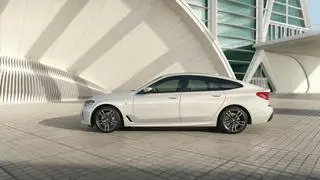The launch of the S-Cross this week marks yet another important chapter for Maruti Suzuki as it goes about consolidating its leadership position in the market.
The company is now charting out a mid-term strategy which will see sales going up to two million units annually by 2020, says RS Kalsi, Executive Director, Marketing & Sales. He was in Hyderabad recently with T Hashimoto, Executive Director, to launch two Nexa showrooms (which will retail the S-Cross and other premium models).
Makeover time Kalsi believes the Indian consumer is getting “dynamic and demanding” which calls for a next generation experience and, hence, the Nexa outlets. Over the years, Maruti has retained its lead over competition by focusing on mileage, quality of service and so on.
“Our cars are extremely fuel-efficient, low on maintenance cost and cover a wide range of segments. So when a customer upgrades, he stay in the Maruti Suzuki fold,” says Kalsi. The launch of the S-Cross (as well as the Ciaz) is significant as it marks a serious intent in the premium segment for a carmaker traditionally associated with compact offerings. This is where the Nexa showrooms will play an important role as part of the image makeover for a new genre of buyers.
Going forward, Nexa will become a critical component of the growth strategy which will also see new models being launched across various segments. “We will introduce vehicles with superior mileage as we did with Alto and Dzire or through the new diesel engine in Celerio,” says Kalsi.
Going by the market response to Ciaz, it does look as if Maruti has succeeded in going beyond the small car imagery at least for now. Not many people thought the company would succeed in this endeavour after the Kizashi failed to make a mark. It will now be interesting to gauge market reaction to the S-Cross as this will be yet another acid test to see if brand Suzuki can carve a niche for itself in the premium space.
Expanding presence The company’s R&D unit in Rohtak, Haryana, will be fully operational by 2017 and will see a quicker pace of rollouts. With facilities like testing in place, the time taken to develop a car will be a lot faster as India gets more independent on the Suzuki map. Capacity will also be enhanced with the new Gujarat facility due to be commissioned in phases by 2017.
Maruti’s next big play will happen in the rapidly growing compact SUV space with the launch of XA Alpha during the course of this year. It will compete with the likes of Ford EcoSport, Renault Duster and the recently launched Hyundai Creta. The company has earmarked capital expenditure of ₹4,000 crore for plant upgrade, R&D and strengthening sales infrastructure.
Maruti is only too aware that it needs to spread its presence even while maintaining a comfortable lead over its closest market rival. From Suzuki’s point of view, it also makes sense to optimise India’s potential as a manufacturing hub and use this base to service other regions, especially Latin America and Africa. The Rohtak R&D base will have its work cut out in the coming years as it gears up to participate in a host of global projects. Suzuki has also indicated that will launch 20 more models by the end of this decade where a lion’s share will find their way into India.








Comments
Comments have to be in English, and in full sentences. They cannot be abusive or personal. Please abide by our community guidelines for posting your comments.
We have migrated to a new commenting platform. If you are already a registered user of TheHindu Businessline and logged in, you may continue to engage with our articles. If you do not have an account please register and login to post comments. Users can access their older comments by logging into their accounts on Vuukle.